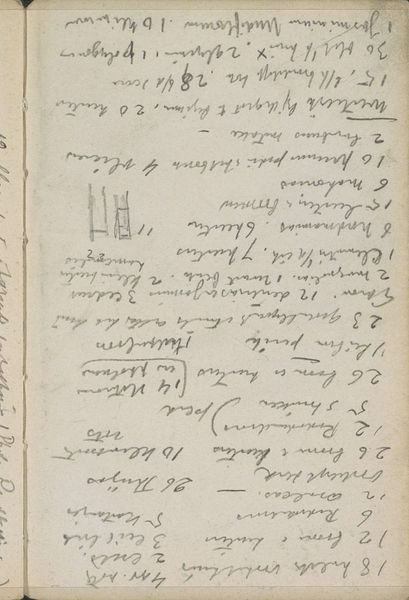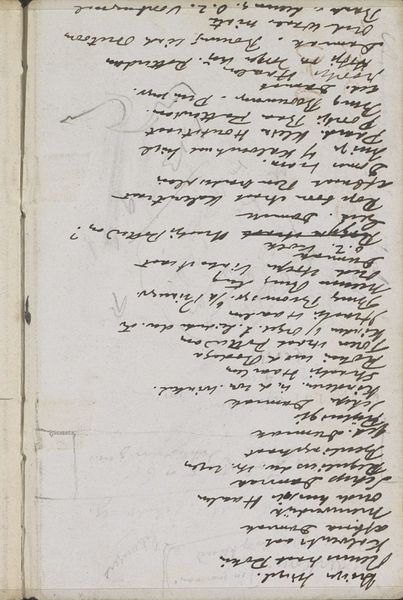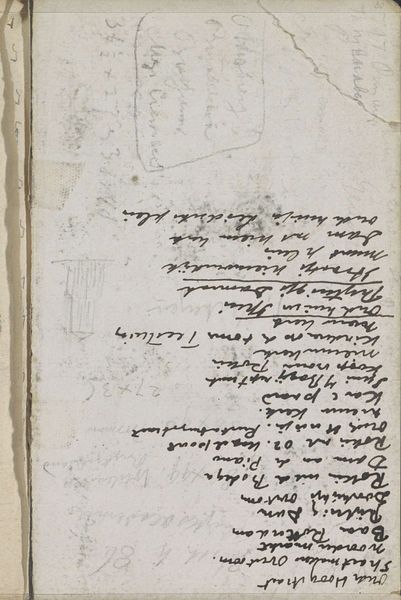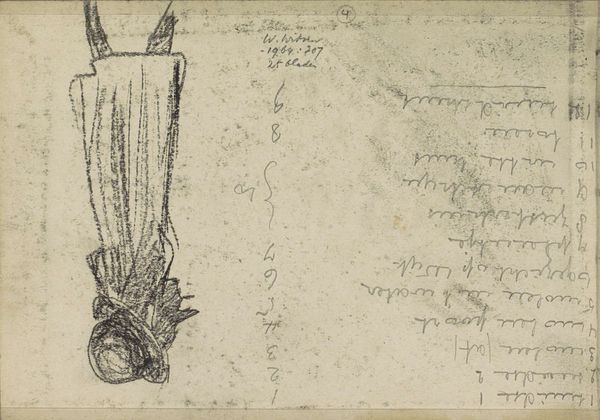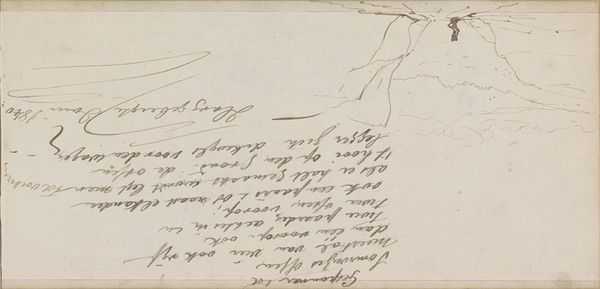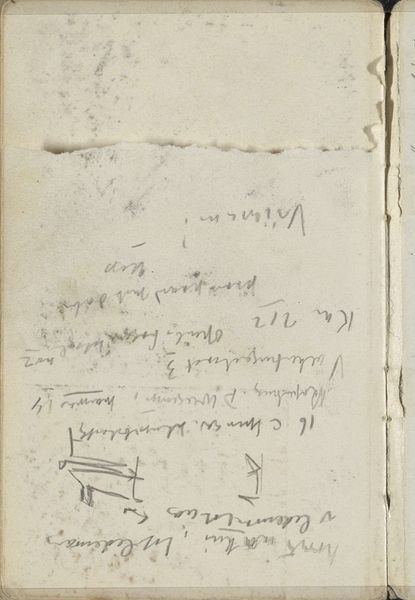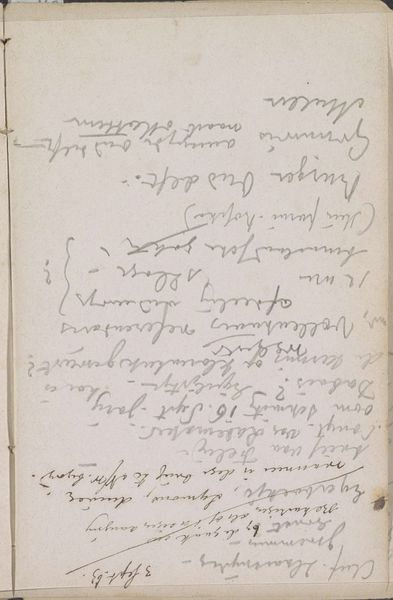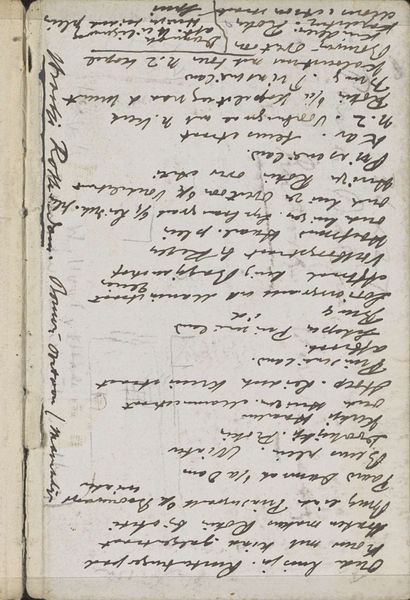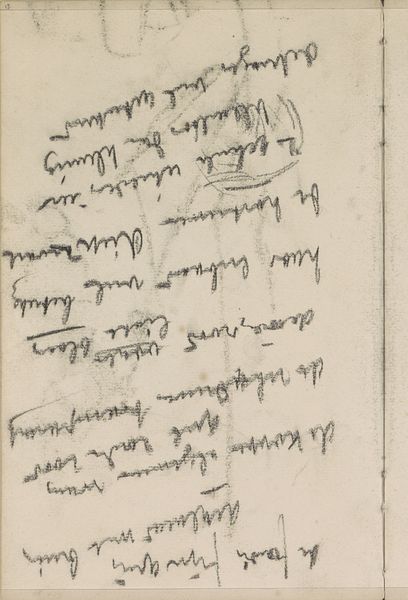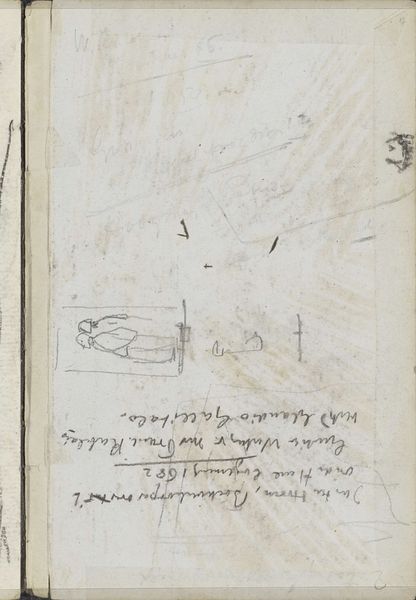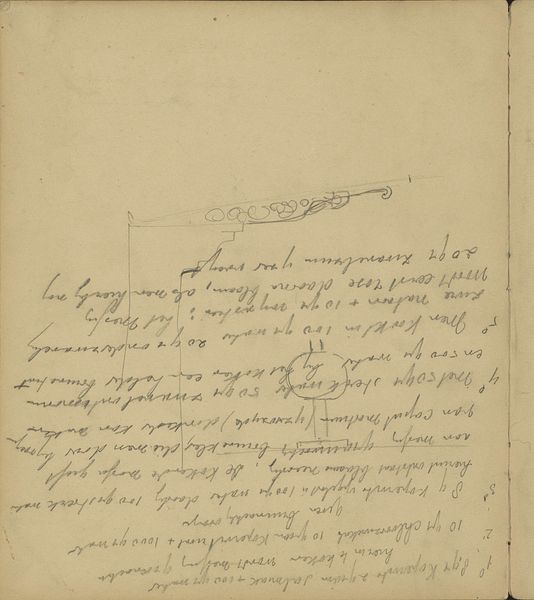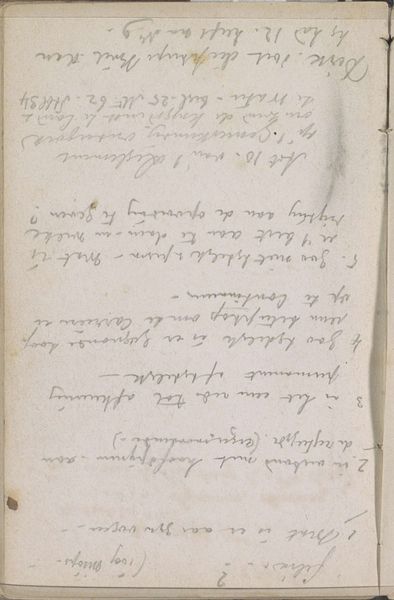
Copyright: Rijks Museum: Open Domain
Editor: This is "Hond die een hert achterna zit," or "Dog chasing a deer," a pen and ink drawing by Johannes Tavenraat, made sometime between 1862 and 1864. It’s on paper, and currently at the Rijksmuseum. The rough sketch really conveys a sense of frantic motion. What cultural or social context do you think shaped Tavenraat's portrayal here? Curator: It's important to understand the prevailing artistic currents of the time. Tavenraat worked in the Romantic period, when there was a real fascination with nature, but not always a straightforward or sentimental one. Think about how the depiction of animals changed across this time, mirroring shifts in how people viewed the natural world. Was it for purely aesthetic reasons, or does it express something deeper about the dog’s role in 19th century Dutch society? Editor: That’s interesting. The inscription beside the drawings feels like another layer adding some other type of social commentary? Was this common practice? Curator: Absolutely! Artists' sketchbooks from this era are amazing because they weren't necessarily intended for public consumption in the way a finished painting was. These books served a much more utilitarian role: they may contain writing which offers unique insight into their working methods and thought processes at the time, but, just like with all writing, should always be received cautiously. Do you feel this text might allude to the workingman in this instance? Editor: The drawing and the text together certainly give me a lot to think about in terms of 19th-century Dutch society! Curator: Indeed. It underlines how crucial it is to see art not in isolation, but as entangled with contemporary societal norms, cultural attitudes, and emerging institutional structures.
Comments
No comments
Be the first to comment and join the conversation on the ultimate creative platform.
